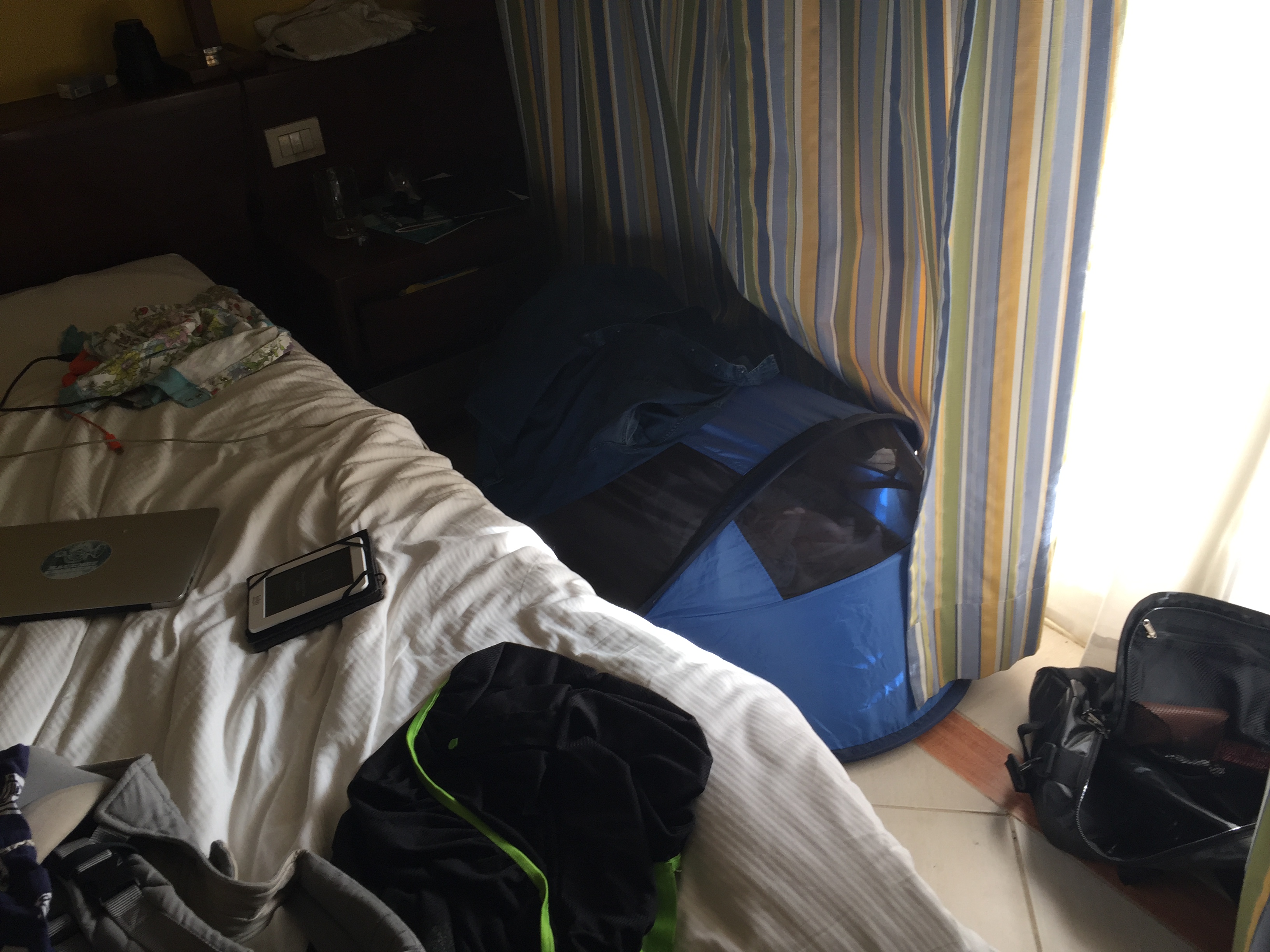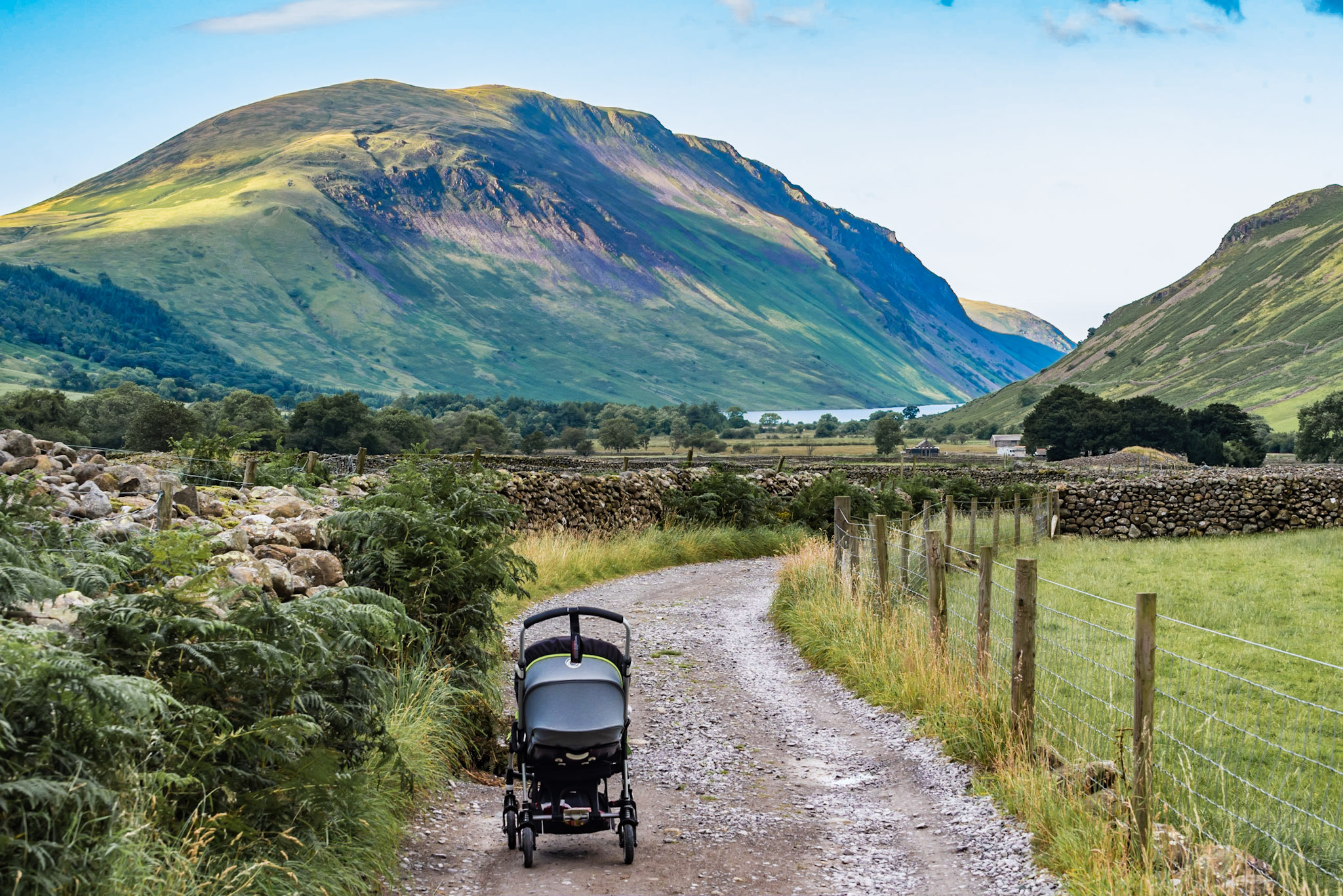Self-catering accommodation is almost always going to be preferable when travelling with a baby or toddler, but if you need to stay in a hotel or bed and breakfast, here are my baby hotel hacks.
Feeding

Before you book, get in touch to find out what the hotel or B&B provides in terms of in-room amenities. A kettle is very useful for warming up baby food or milk, and a fridge for keeping it cold. If they’re not available – more common in a B&B – ask if you can use the management’s kitchen.
If there’s an option, and you can afford it, always go for a room with an en suite bathroom. It’s easier for baby bedtime, means you can keep dirty nappies separate from where you’re sleeping, and serves as a nightlight if you leave the door open a crack. Also, you don’t want to be traipsing to and from the communal bathroom when you realise you need to pee after you’ve got up to feed or soothe the baby. Ask for a bathroom with a tub; if there isn’t one available, pack a small inflatable paddling pool.
Washing and sterilising bottles is more challenging without a kitchen, but perfectly doable in an en suite if you’ve packed the right paraphernalia (here are my tips). You’ll need a bottle brush, a bit of washing up liquid (though I used shower gel last time and it was fine), cold sterilising tablets, and a Tupperware box with a lid.
Sleeping
Many hotels will provide a cot if you request it in advance, but bear in mind that it might be rubbish – the hotel we stayed at in Egypt didn’t include mattresses in theirs. So if you can handle the extra luggage, bring your own travel cot. If not, pack some bedding just in case – this has the added benefit of smelling like home, thereby making your child feel more secure in a new place. The baby girl kicks off her blankets so we use a sleeping bag instead (it also comes in handy on planes).
The first few trips we did with the baby girl she slept in the carrycot bit of her pram. When she outgrew that we moved her into a little pop-up tent, which packs down very small and is super light. The other benefit of the tent is that it’s its own contained environment so your baby isn’t distracted by her surroundings. Whichever style of travel cot you opt for, have your baby nap in it a couple of times at home so it’s familiar when you go away.
If your child needs darkness to sleep, consider packing a SnoozeShade to cover the cot. That way you don’t need to worry too much about chinks of light coming in between the curtains, and can have a light on in the room after your baby has gone to sleep but before you’ve gone to bed (I find the buggy model of SnoozeShade invaluable too). For co-sleepers, bring a travel blackout blind instead, which you can sucker onto the window. They’re a bit of a faff to use, but worth it if your baby is very sensitive to light. You’ll want to buy head torches too if you’re co-sleeping – ones with an infrared setting won’t wake the baby but are bright enough to see your way around and to read by.
Choosing a room

Noise-wise, you want to position the cot as out of the way as possible in the hotel room so you’re not having to walk past it all the time. Depending on your destination, it’s worth asking about the cost of a suite compared to a standard double – in a lot of the big US hotel chains there often isn’t much difference, and you’ll be grateful of the extra space to stow not just your sleeping child, but all their stuff too. If that’s not an option, a large cupboard can work nicely, assuming there’s adequate ventilation.
Whatever size room you’re in, white noise can be helpful to cover the sound of your creeping around after baby bedtime. There are various white noise smart phone apps available, plenty of them for free. If you’re worried about the noise from other guests and hotel staff, ask for a room at the end of a hallway but away from the lifts or stairs (this trick works the other way around too – the further you are from other guests, the less bad you’ll feel if your baby cries in the night). And remember to put the ‘do not disturb’ sign out if you’re staying in for nap time.
Baby bedtime
The most annoying thing about staying in a hotel or B&B rather than an apartment is that you can’t really leave the baby by themselves, so your own bedtime (or at least your sitting silently in the dark time) is dictated by your baby’s – not exactly the ideal holiday scenario. If you’re in a hot place, getting a room with a balcony is an excellent work round: it can’t compete with being out on the town, but at least you can have a beer and a conversation at a reasonable volume. If your hotel does room service or is okay with you bringing in a take away, even better.
The alternative is to do bedtime at the hotel – bath, book, pajamas, etc – but put your baby to bed in her pushchair (this only works if your baby will sleep in a pushchair, obviously), and take her out with you for the evening. If she’ll stay asleep while you transfer her from buggy to cot at the end of the night, do that. Ours always wakes up if we try that, so we just leave her in the buggy, in our room, until she wakes up of her own accord, and transfer her then.
For those times where you are confined to your room after baby bedtime or during naptime, I can’t recommend bone-conducting headphones enough.
Child-proofing
Consider packing a roll of duct tape for emergency child-proofing. Use it to secure drawers, tidy cables or pad corners of low tables. Just make sure you test your tape on an unseen area first to make sure it’s not going to take off the paintwork or leave a mark.
Babysitting and kids’ clubs
A lot of hotels can arrange in-room babysitting, whether you fancy an evening out or just a couple of hours child-free at the beach. Rates vary depending on your destination, as do safeguarding measures such as first-aid training and background checks, so check before you book to ensure that you’ll be confident leaving your baby.
Kids’ clubs used to be limited to older children – and in many destinations that’s still the case – but more and more resorts and hotels these days are waking up to what parents want and providing childcare for the under-2s too. Travel in the off-season and childcare might even be included in the cost of your stay.
Some areas of the world are better represented with early years childcare than others. It can still be tricky to find in South East Asia and the Middle East, for example, while in Europe and the Caribbean, creches for children under the age of 2 are fairly common. Mostly it’s beach destinations that offer it, but there are a handful of ski holiday companies providing childcare for under-2s too.
Even if there’s no dedicated creche for under-2s at a hotel you’re considering booking, you might be able to hire a babysitter to look after your baby within the confines of a kids’ club for older children.
It’s worth bearing in mind that, as with creches at home, you’ll most likely need to stay on site at the hotel or resort. And booking ahead is a good idea. Make sure you check the individual hotel’s policy when booking.
